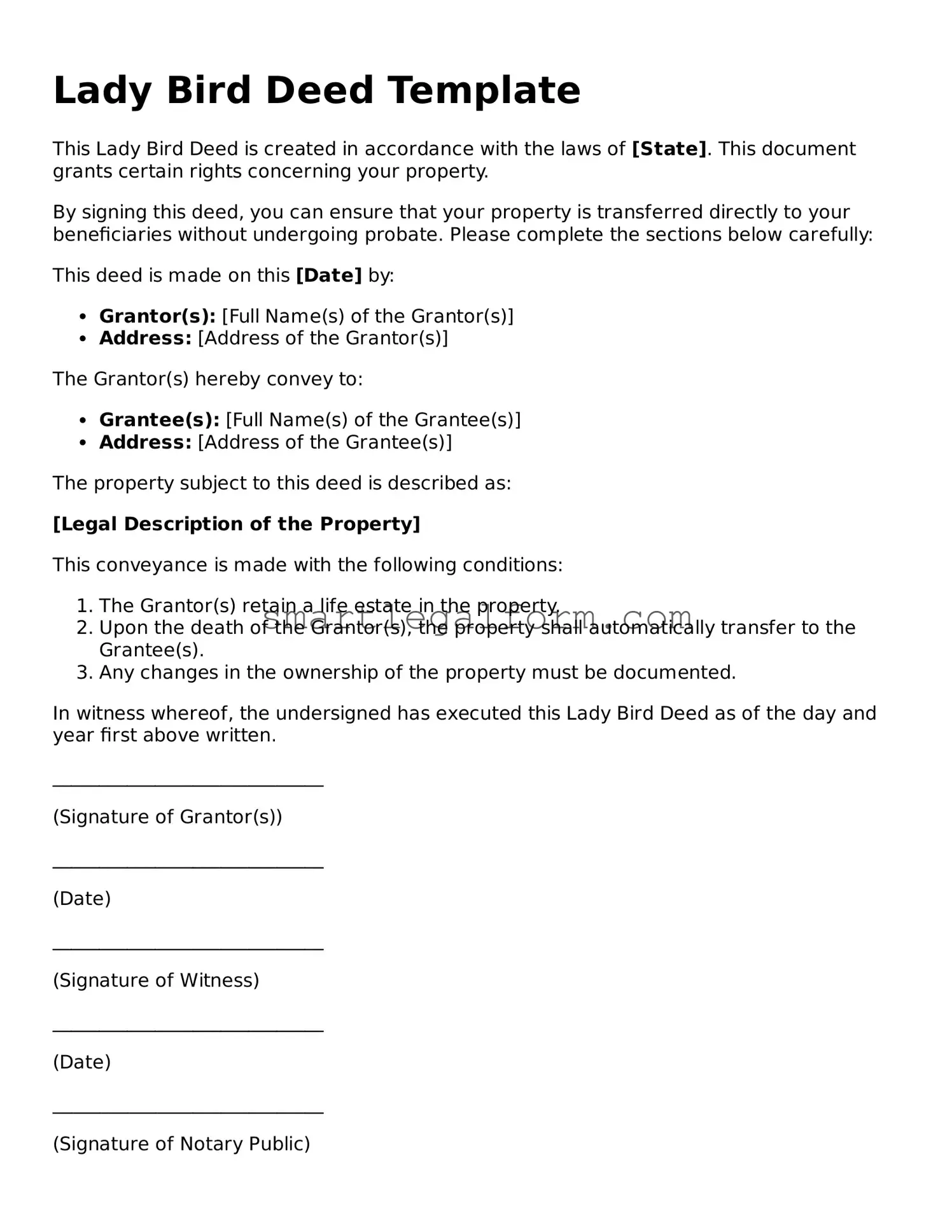Lady Bird Deed Template
This Lady Bird Deed is created in accordance with the laws of [State]. This document grants certain rights concerning your property.
By signing this deed, you can ensure that your property is transferred directly to your beneficiaries without undergoing probate. Please complete the sections below carefully:
This deed is made on this [Date] by:
- Grantor(s): [Full Name(s) of the Grantor(s)]
- Address: [Address of the Grantor(s)]
The Grantor(s) hereby convey to:
- Grantee(s): [Full Name(s) of the Grantee(s)]
- Address: [Address of the Grantee(s)]
The property subject to this deed is described as:
[Legal Description of the Property]
This conveyance is made with the following conditions:
- The Grantor(s) retain a life estate in the property.
- Upon the death of the Grantor(s), the property shall automatically transfer to the Grantee(s).
- Any changes in the ownership of the property must be documented.
In witness whereof, the undersigned has executed this Lady Bird Deed as of the day and year first above written.
_____________________________
(Signature of Grantor(s))
_____________________________
(Date)
_____________________________
(Signature of Witness)
_____________________________
(Date)
_____________________________
(Signature of Notary Public)
_____________________________
(Date)
